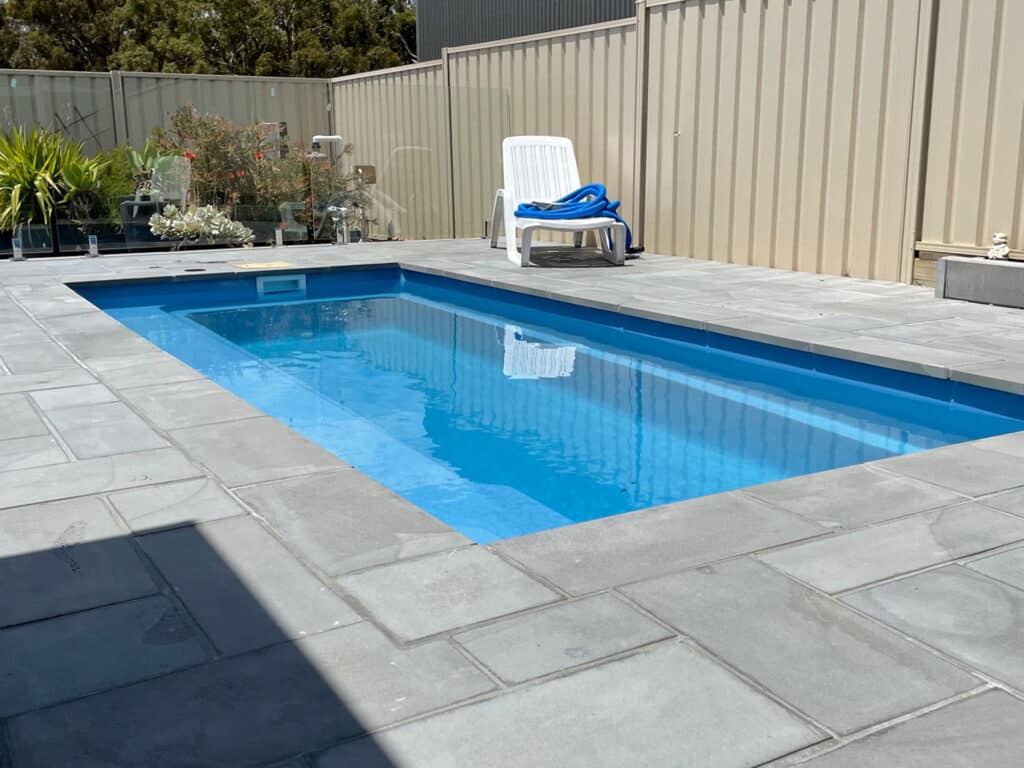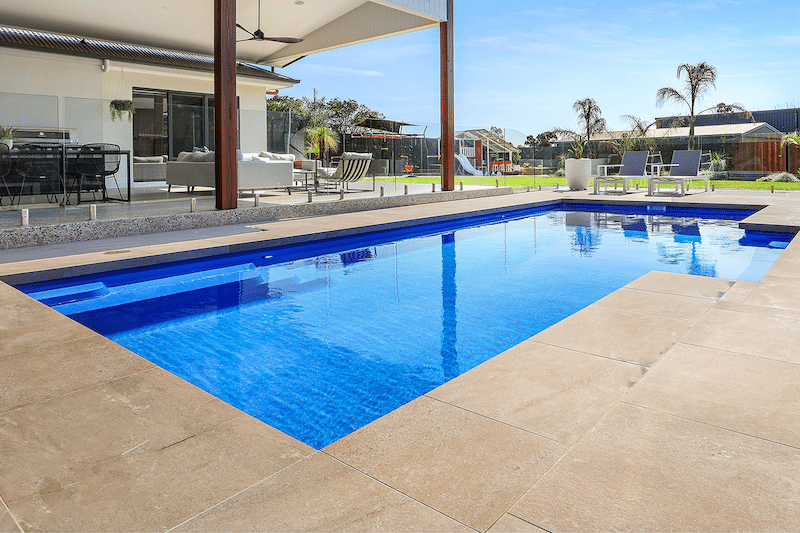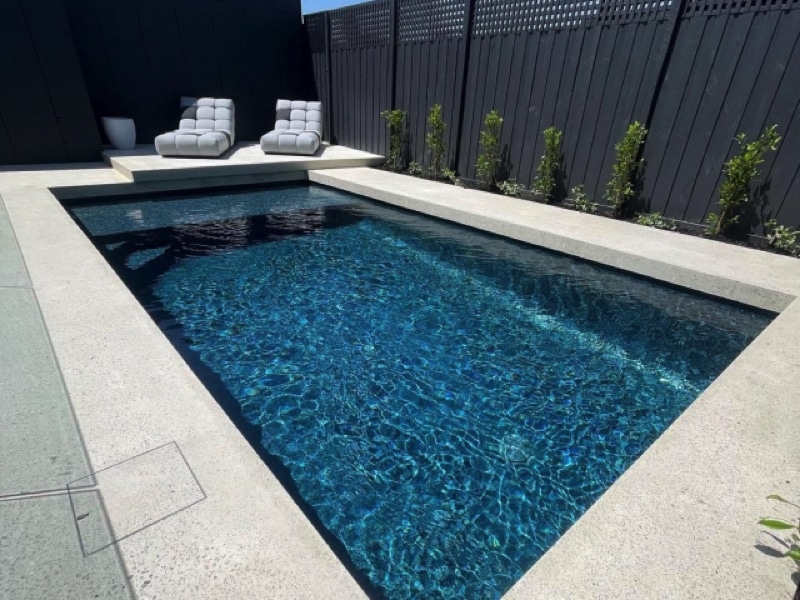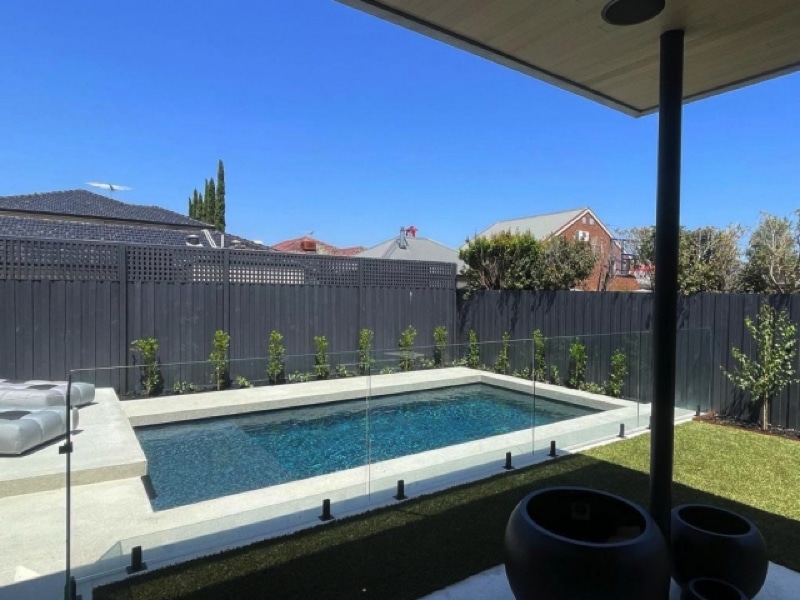Blue Pools and Spas
Discover Melbourne’s Finest Fibreglass Pools
Welcome to Blue Pools and Spas, your premier choice for fibreglass pool builders in Melbourne. If you’re looking to enhance your outdoor living space with a durable, low-maintenance, and visually stunning pool, you’ve come to the right place. Fibreglass pools have become increasingly popular in Melbourne due to their numerous advantages, including quick installation times, smooth finishes, and longevity.
At Blue Pools and Spas, we specialize in creating custom fibreglass pools that perfectly match your vision, preferences, and budget. Our experienced team is dedicated to delivering high-quality craftsmanship and exceptional customer service from start to finish. Discover why so many homeowners in Melbourne trust us to bring their dream pools to life.

Fibreglass Pools
Why Choose Fibreglass Pools?
The Ideal Choice for Durability, Beauty, and Low Maintenance
When it comes to selecting the perfect pool for your home in Melbourne, fibreglass pools stand out as a top choice for many homeowners. Their popularity has surged due to the unique combination of durability, low maintenance, and aesthetic appeal they offer.
At Blue Pools and Spas, we specialize in creating custom fibreglass pools that not only enhance your outdoor living space but also provide a hassle-free and enjoyable swimming experience. Let’s explore the key advantages of choosing a fibreglass pool and how it compares to other pool types.

Advantages of Fibreglass Pools
Fibreglass pools are renowned for their durability. Unlike other pool types, fibreglass pools are resistant to algae and other common issues, ensuring a long-lasting, low-maintenance swimming experience. The robust construction means fewer repairs and less maintenance over time.
We conduct detailed cost-benefit analyses to assess the economic viability of your projects. By quantifying the costs and benefits associated with various options, we help you determine the most cost-effective and beneficial course of action.
Fibreglass pools can be installed much faster than concrete or vinyl pools. Since the pool shell is pre-manufactured, the installation process involves less on-site construction, allowing you to have your pool ready for use in a matter of weeks rather than months.
The smooth surface of fibreglass pools is gentle on the skin, providing a comfortable swimming experience. This finish also adds to the pool’s aesthetic appeal, giving it a sleek and polished look.
Comparing Fibreglass Pools to Other Types
Concrete pools offer customization options but require longer installation times and more maintenance. In contrast, fibreglass pools are quicker to install, easier to maintain, and often more cost-effective in the long run.
While vinyl pools are initially less expensive, they require regular liner replacements, which can add up over time. Fibreglass pools, with their durable and low-maintenance construction, provide a more cost-effective and hassle-free option for homeowners.
By choosing fibreglass pools from Blue Pools and Spas, you ensure a long-lasting, beautiful addition to your home that will provide enjoyment for years to come.

Our Fibreglass Pools are designed to suit your needs
Fibreglass Pools Services
At Blue Pools and Spas, we take pride in providing a full suite of services to meet all your fibreglass pool needs in Melbourne.
Fibreglass Pool Selection
Choose from our extensive catalog of high-quality fibreglass pool models. Our selection includes various shapes, sizes, and designs to suit your preferences and space requirements.
Site Assessment and Preparation
Our team conducts a thorough assessment of your property to determine the best location for your fibreglass pool. We handle all aspects of site preparation, including excavation and leveling, to ensure a smooth installation process.
Professional Installation
Our experienced technicians handle every aspect of the installation process with precision and care. From laying the foundation to installing the pool shell and completing the finishing touches, we ensure that your fibreglass pool is installed correctly and efficiently.
Equipment and Accessories Installation
We offer a wide range of pool equipment and accessories to enhance your swimming experience. From filtration systems to lighting and automation features, we install everything needed to make your fibreglass pool functional and enjoyable.
At Blue Pools and Spas, we take pride in providing a full suite of services to meet all your fibreglass pool needs in Melbourne.
Fibreglass Pools Projects
Photo gallery of previous fibreglass pool projects
Services
General Questions About Fibreglass Pools
Are fibreglass pools suitable for all climates?
Yes, fibreglass pools are designed to withstand a wide range of climates, including Melbourne’s diverse weather conditions. Their durable construction and flexibility make them an excellent choice for various environments.
How long does it take to install a fibreglass pool?
The installation time for a fibreglass pool depends on various factors, such as site preparation, weather conditions, and the size of the pool. However, compared to other types of pools, fibreglass pools typically have a shorter installation timeline, often taking just a few weeks from start to finish.
What maintenance is required for a fibreglass pool?
Fibreglass pools are known for their low maintenance requirements. Regular cleaning, water testing, and equipment inspections are essential to keep the pool in top condition. Additionally, occasional surface cleaning and maintenance of the pool equipment may be necessary to ensure optimal performance and longevity.
How does the cost of a fibreglass pool compare to other pool types?
The cost of a fibreglass pool can vary depending on factors such as size, design, and additional features. While fibreglass pools may have a higher upfront cost compared to some other types of pools, their long-term durability and low maintenance requirements often result in lower overall costs over time. Additionally, fibreglass pools can offer excellent value for money due to their durability and longevity.
Why choose Blue Pools and Spas for your fibreglass pool project in Melbourne?
Blue Pools and Spas is Melbourne’s premier choice for fibreglass pool construction. Our team of experienced professionals is dedicated to delivering high-quality craftsmanship and exceptional customer service. With our extensive knowledge and expertise, we ensure that every fibreglass pool project exceeds our clients’ expectations. Contact us today to learn more about our services and get started on creating your dream pool with the leading fibreglass pool builders in Melbourne.
Contact
Ready to Start Your Project?
Schedule a Consultation
Ready to take the first step towards building your dream pool? Contact Blue Pools and Spas today to schedule a consultation with one of our experienced pool experts. During your consultation, we’ll discuss your vision, preferences, and budget to develop a customized plan for your project. Whether you’re ready to move forward with a new pool installation or simply exploring your options, our team is here to help every step of the way.
Contact Information
Don’t wait any longer to transform your outdoor living space with a beautiful new pool from Blue Pools and Spas. Contact us today to get started!




